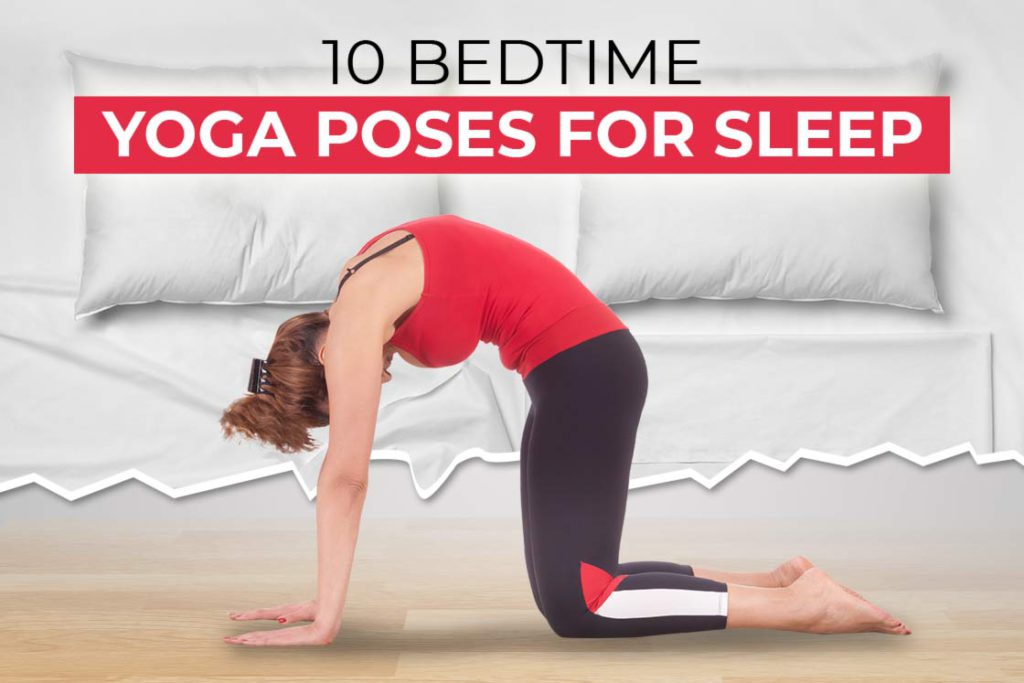
Are you facing trouble falling asleep even after your hectic and tiring schedule? Well, you are not alone in this, according to one report from CDC 1 in 3 American adults don’t get enough sleep. Whether you want to improve your sleep quality or fall asleep faster, bedtime yoga can serve the purpose.
Bedtime Yoga
The practice of some yoga poses that you can do in your bed can have almost immediate effects on slowing down the body and mind. Not only the irregular sleep pattern but also chronic insomnia can be easily treated with bedtime yoga.
Bedtime yoga generally involves the practice of poses that stretch your muscles and stress accumulated nerves bringing in the calming effect necessary for a restful night’s sleep.
Besides helping you doze off, bedtime yoga efficiently works for providing other physical and psychological benefits. Yoga before bed also has therapeutic benefits among insomniacs and older adults as an alteration to pharmaceutical aids.
Benefits
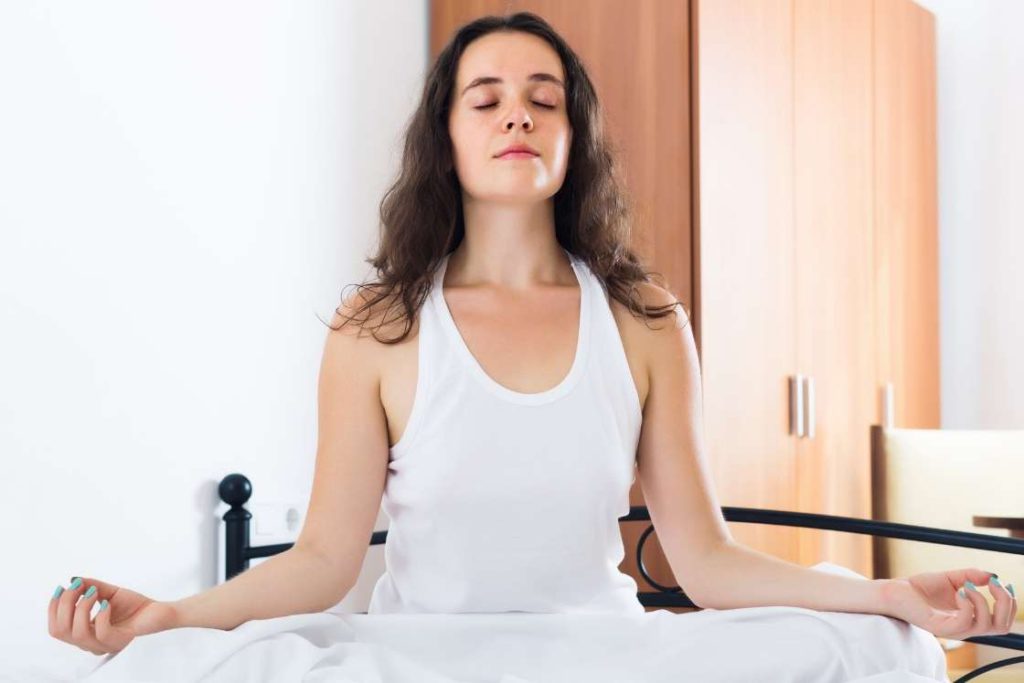
Some of the major benefits of bedtime yoga for sleep are described below for clearer understanding.
1. Enhances sleep quality
Yoga is proved to improve sleeping patterns not only quantitatively but also qualitatively. It provides sound sleep by regulating the diurnal cortisol level within the body.
In a 2017 research on Metastatic Breast Cancer Patients was conducted to observe the effect of yoga on their sleep quality. Due to breast cancer, these patients experience psychological distress which was directly disrupting their sleep patterns. However, following a yoga intervention for three months, an improvement in the sleep quality and sleep parameters was observed.
2. Relieves stress and promotes relaxation
Long working hours might deprive you from social and personal life. This results in increased levels of stress hormone and disturbs sleeping hours.
Yoga is widely practiced to alleviate stress levels and to achieve relaxation. In 2015 a study on staff nurses in China was conducted to determine how yoga can lower work stress and impact sleep quality. After 6 months, the yoga-practicing nurses reported better sleep quality and reduced stress level when compared with non-practicing participants.
3. Helps in weight loss
Yoga is an effective tool practiced to lose weight by positively impacting the sleeping and eating habits. It develops mindfulness and helps you control your stress eating, reduces cravings, appetite, etc. Besides this, it develops mindfulness towards the eating habits that maintains body weight.
A research of 2016 also proves the same that yoga intervention is quite successful in losing weight. Other physical benefits like improved sleep, decreased pain, high energy levels, lowered stress levels were also observed among the participants.
4. Cures insomnia
Irregular or reduced sleeping leads to chronic insomnia and negatively affect productivity as well as quality of life. Yoga comes in handy in treating insomnia and promoting sleep quality.
There is supporting study which showed successful implementation of yoga for treating chronic insomnia among 20 participants. These participants experienced improved sleep efficiency, total sleep time, total wake time, sleep onset latency, and wake time after sleep onset after regular practice of yoga.
How does yoga help you fall asleep?
There are several reasons associated with sleep deprivation, however, stress is found to be common among all. Stress not only disrupts sleep patterns but also leaves you frustrated and anxious about bedtime.
A 2012 report by National Health Statistics claimed that yoga has helped over 55% of practitioners in improving sleep quality and 85% of practitioners in reducing their stress levels.
The relationship between yoga and sleep is because yoga helps the practitioners in the following ways:
- Yoga practice may cause temporary physical fatigue by the involvement of muscles in some poses. This induced physical fatigue can fall you asleep faster when fatigue muscles come into recovery mode at the end of the bedtime yoga session.
- In yoga, mindfulness meditation increases the melatonin (hormone that regulates the sleep-wake cycle) level which calm down the nervous system in preparation for sleep.
- Rhythmic and deep breathing techniques of pranayama yoga improves sleep quality. It includes the fixed ratio of inhalation, exhalation, and retention which relaxes the brain and revives the body.
- Eliminates toxins and reduces stress, anxiety, etc. due to increased oxygen levels in the blood

Restorative poses that rush oxygenated blood to the brain settling all the disturbing thoughts and inducing meditational states are helpful in inducing sound sleep.
Hatha yoga and Yoga Nidra focusing on body-mind coordination by incorporating breathing is recommended for inducing sound sleep by the experts.
Thus, try out the following beginner-level and mild stretching poses before bedtime to have a good night’s sleep.
1. Wide-knee Child’s Pose (Balasana)
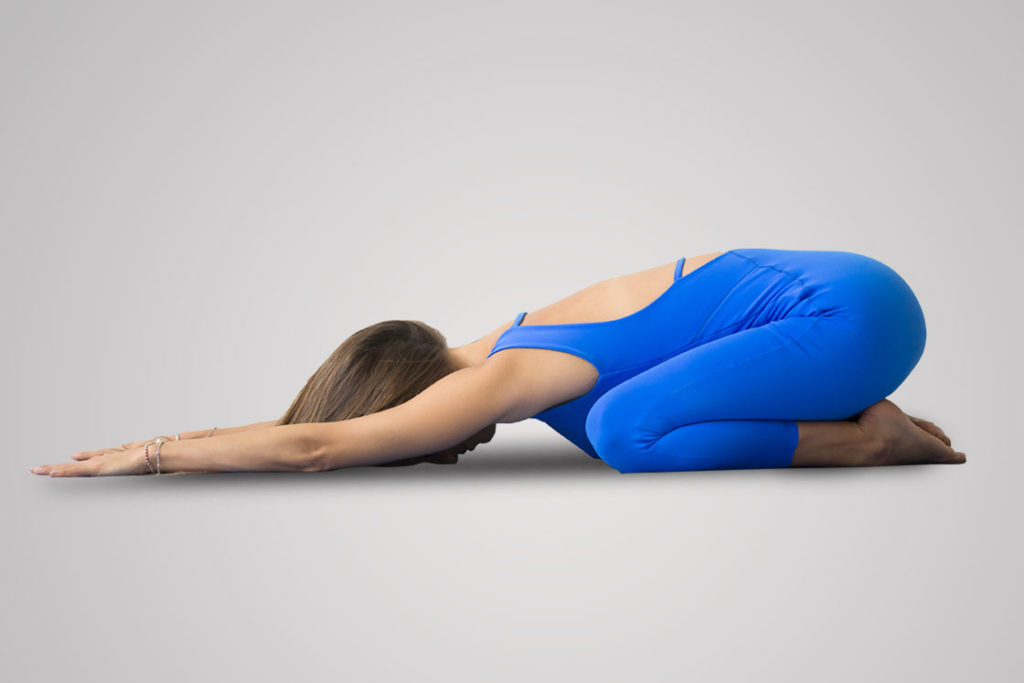
Wide-knee Child’s Pose works best for those who follow a sedentary lifestyle especially due to their long hours of a desk job. It is a gentle stretch that works on the lumbar spine and hip flexors.
No matter, how easy it looks, this gentle stretch stimulates the heart chakra and helps to alleviate the negative emotions. Thus, it reduces unnecessary hurt or mental and emotional burden, which makes the child’s pose a perfect fit for relaxing the mind and body, thereby inducing sound sleep.
How to practice:
- Kneel on the floor taking the toes back and placing the buttocks on the feet.
- Separate your knees wider than the hips.
- Bend forward stretching the arms and walking the hands forward.
- Bring your forehead to the floor and breathe gently.
- Hold it for 5 deep breaths.
Other benefits of Wide-knee Child’s Pose
Besides being a perfect bedtime yoga enhancing sleep quality, the child’s pose also provides several benefits to the practitioner. Some of these benefits are:
- It lengthens and relaxes the neck and spine.
- Relieves pain in the neck, back, and eases tension in the shoulders.
- Lowers anxiety and stress levels by enhancing the breath quality.
- Massages the abdominal organs which facilitates better digestion and elimination.
- It stretches the muscles, tendons, ligaments, and also improves blood circulation.
2. Standing Forward Bend (Uttanasana)
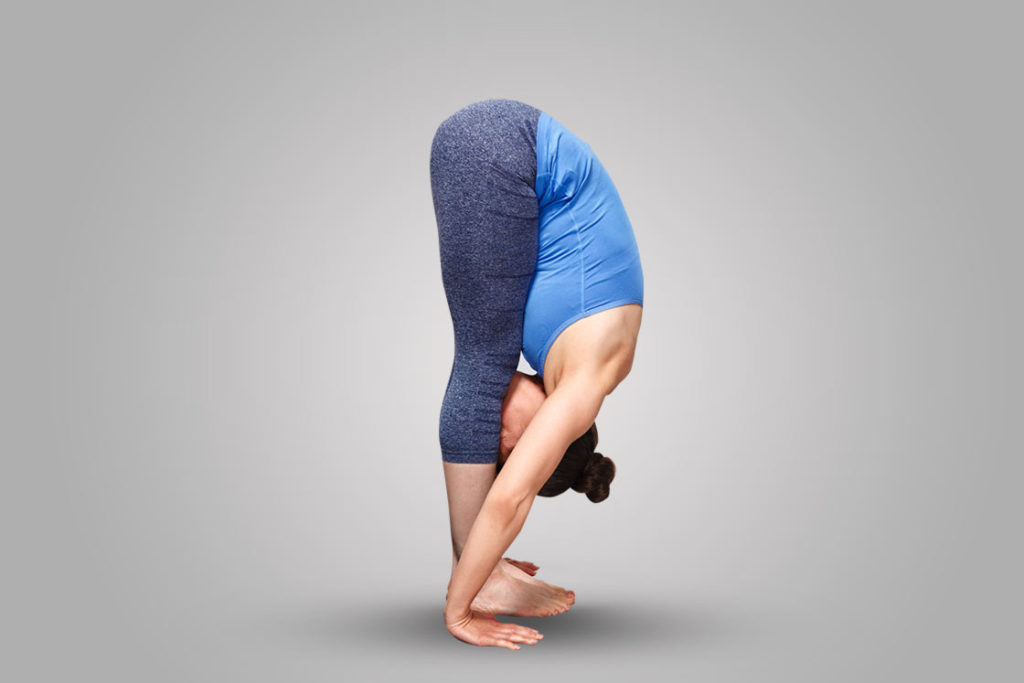
Practicing Standing Forward Bend poses the head and spine in an inverted position. Performing it with rhythmic breathing rushes the oxygenated blood to the nervous system. It also activates the parasympathetic nervous system which brings deep relaxation and cures sleep disorders.
Due to the overuse of gadgets, especially, phones often give you a stiff and painful neck, aka tech neck or text neck. It is also one of the major reasons that causes sleep deprivation these days. Hence, standing forward bend also provides an opportunity to relax the neck and spine to overcome insomnia.
How to practice:
- Stand keeping the feet hip-width apart and raise your arms overhead while inhaling
- Exhale to bend forward at the hips pushing the buttocks back.
- Maintaining the integrity of the back, bend further until the palms reach the floor and the forehead touches the knees.
- Keeping the knees soft feel the stretch in the hamstrings and let your head hang down.
- Hold the pose for 4-8 breaths pressing the belly against the thighs.
Other benefits of Standing Forward Bend
- Increases the spinal strength and flexibility
- Enhances the strength of calves, knees, and hamstrings.
- Stimulates abdominal muscles and organs to improve digestion.
- Reduces stress, anxiety, and depression.
- It also benefits the kidneys, liver, and spleen.
- Alleviates the symptoms of menopause and regulates the blood pressure.
3. Standing Half Forward Bend (Ardha Uttanasana)
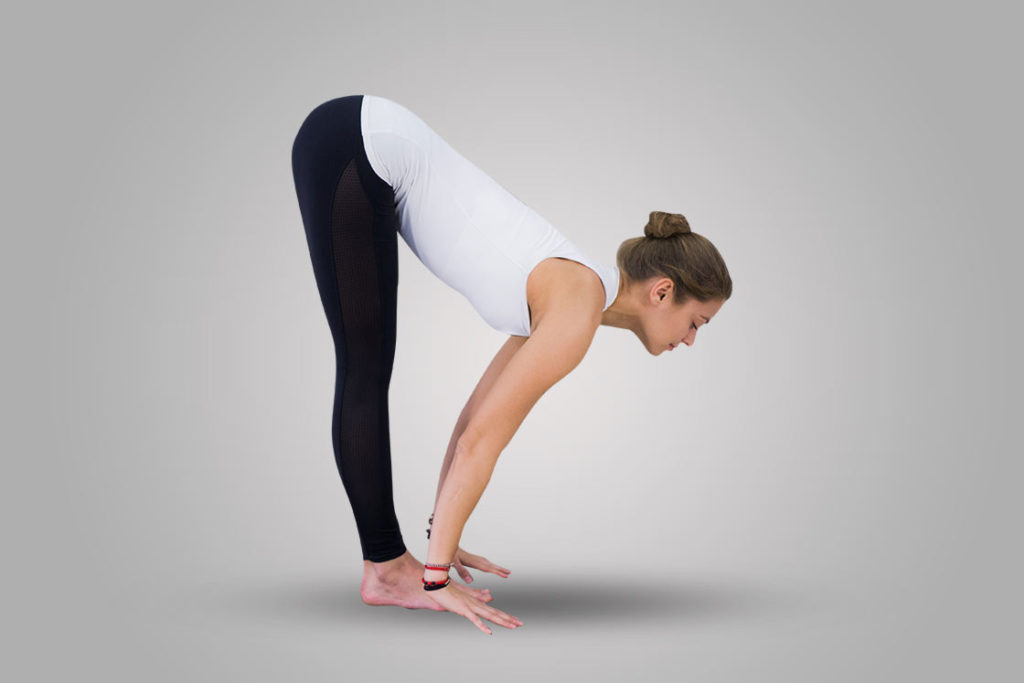
This modified version of Standing Forward bend is for those practitioners who want to achieve relaxing effects of the original pose but finds that challenging.
It also leaves similar relaxing effects as the former one. Practicing standing half-forward bend serves as an effective bedtime yoga as it relaxes the hips, back, psoas, gluteus maximus, chest, and neck muscles.
This helps in eliminating tension around the joints and muscles and also relieves stress. It leaves soothing effects on body and mind which makes it easier to fall asleep.
How to practice Standing Half Forward Bend
- Stand keeping the legs firm and feet hip-width apart.
- Inhale to raise your arms overhead and while exhaling bend forward extending the arms straight.
- Bend forward until the arms reach the level of the hips keeping the back straight.
- In the final pose, the torso, and the legs form a 90° angle.
Other Benefits of Stand Half Forward Bend
- This pose is known to improve body posture.
- Improves the strength of the hips, core, and back muscles.
- It is helpful in lowering hypertension.
- It is therapeutic in healing digestive disorders and relieving menstrual pain.
4. Reclining Bound Angle Pose (Supta Baddha Konasana)
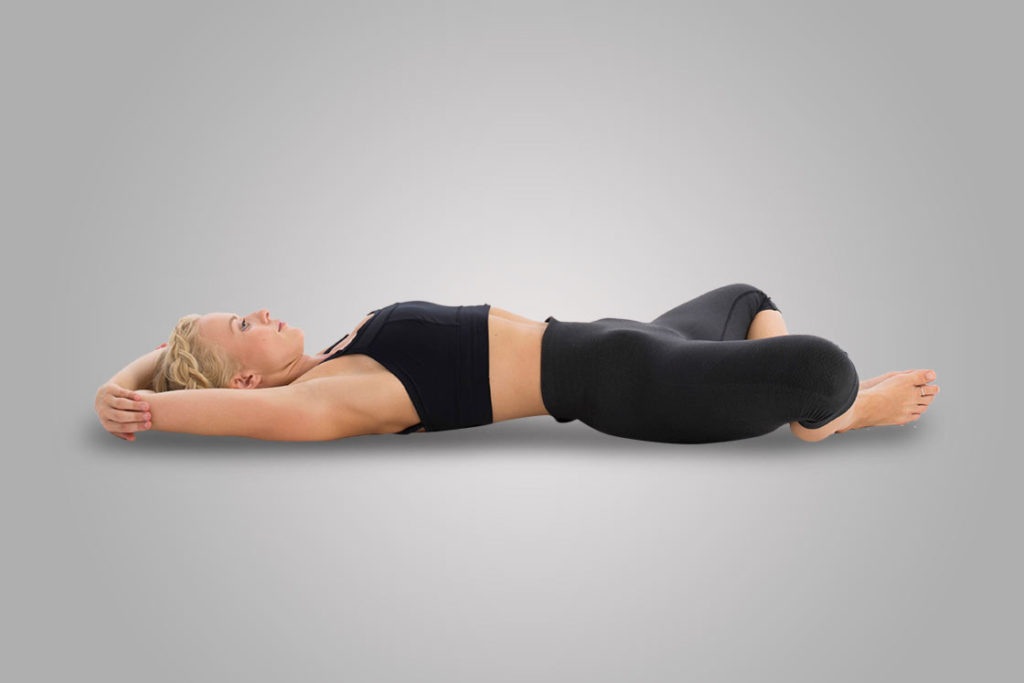
Reclining Bound Angle pose is known for its rest and digest response. This pose stretches the abdominal muscles and relieves any accumulated tension in this region.
Therefore, if your gut is giving you troubles like cramps, bloating, or pain, and keeping you up all night long, then, you should practice reclining bound angle pose. It promotes a peaceful night’s sleep by reducing the heart rate.
How to Practice:
- Lie down on the floor in a supine position bending the knees and placing the feet closer to the feet.
- Join the bottoms of your feet and let the knees fall to either side on the floor.
- Keep your arms by the sides or stretch them overhead relaxing the spine and shoulders.
- While exhaling brings the heels closer to the groin.
- Keep breathing while holding the pose and with each exhalation relax and open the hips even more.
Other benefits of Reclining Bound Angle Pose
- It stretches the knees, hips, groin, and inner thighs.
- Due to improved blood circulation to the pelvis, it eases menstrual discomfort and symptoms of menopause.
- It relieves lower back pain and sciatica.
- It is also known to reduce belly fat and tones the lower abdomen.
5. Legs-Up-The-Wall Pose (Viparita Karani)
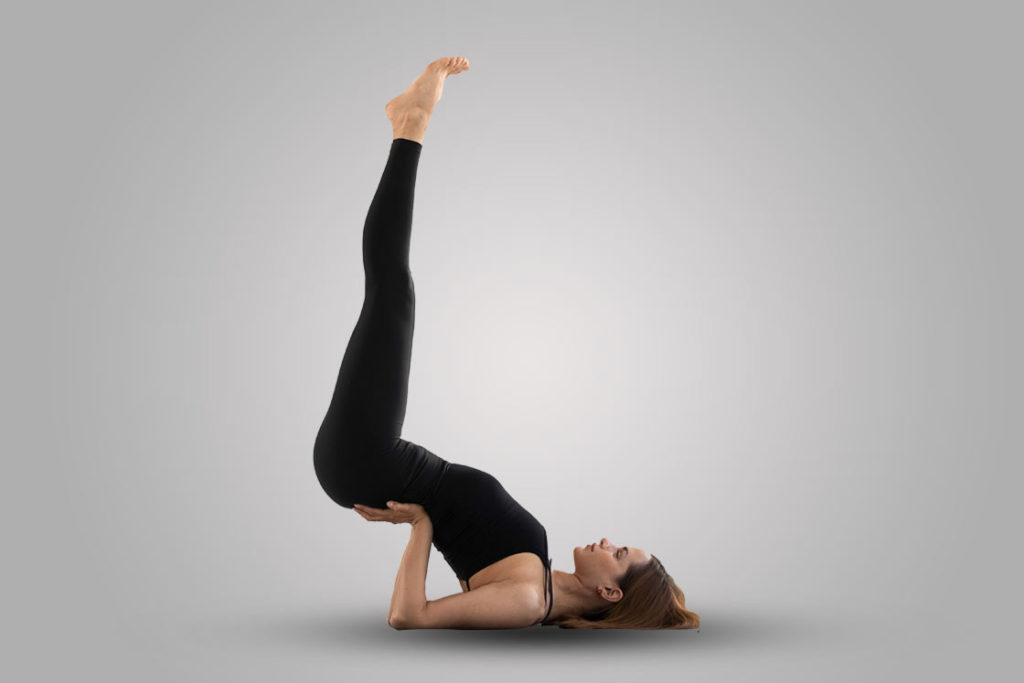
Lying on the floor in Legs-Up-The-Wall pose leaves a restorative effect on the body. This pose (Viparita Karani) is mentioned in Hatha Yoga Pradipika to calm down the energy stimulus that may disturb the sleep cycle.
In this pose, legs are inverted in the air (like shoulder stand pose). It’s especially helpful for those whose work demanding long hours of standing or sitting. Staying on the legs all day long might cause swelling around the feet and ankles. Bringing legs into inversion in this pose recirculates blood to the regions leaving relaxing effects.
Even lying in this pose for a shorter duration is as effective as taking a short power nap.
How to practice:
- Lie down on your back keeping your buttocks closer to a wall.
- Gently raise your legs placing them adjacent to the wall.
- Keep the head, shoulders, and spine to the floor.
- Relax the arms by your sides and stay there for 5-10 minutes.
Other benefits of Legs-Up-The-Wall
- It engages the core muscles and abdominal organs thus improves digestion.
- This pose also has therapeutic effects on sciatica pain.
- It leaves relaxing effects on the neck and shoulders.
- Focusing on the breath while lying in this pose relaxes and calms the mind.
6. Corpse Pose (Shavasana)
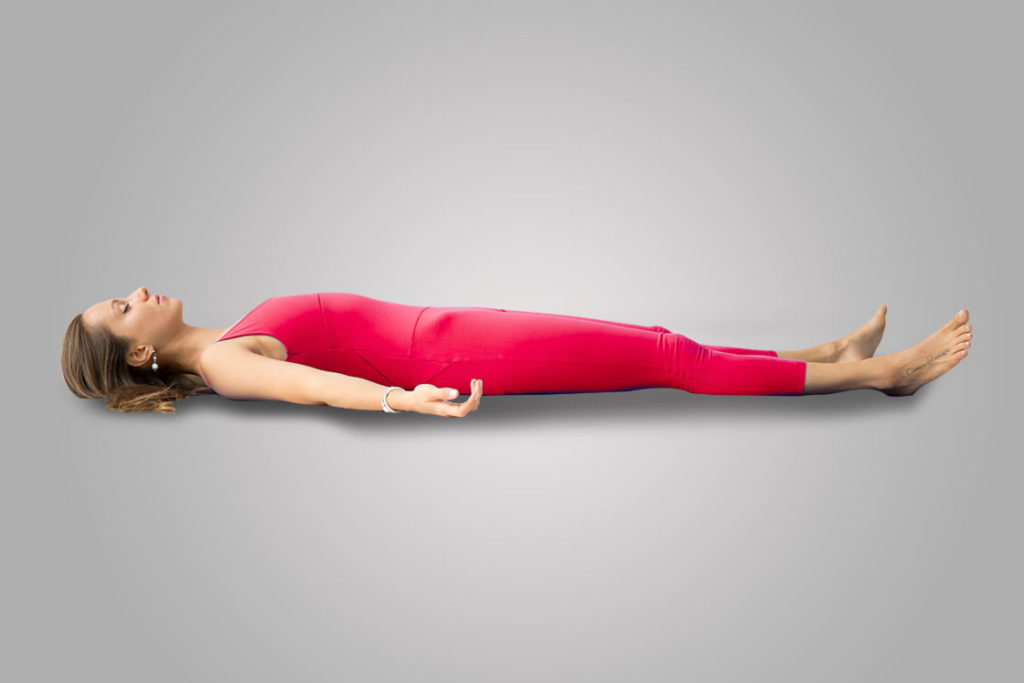
Bedtime yoga is incomplete without practicing Corpse Pose, the good news is it can be practiced lying on the bed.
This relaxing pose helps in taping the parasympathetic nervous system. Besides this, it is known to reduce blood pressure, heart rate, and levels of stress that eventually promotes sound sleep.
How to practice
- Lie down on your back on the bed or floor.
- Keep the legs straight and your arms by your side with palms facing up.
- Breath gently and easily.
- Gradually relax all your body parts, starting from toes to the crown of the head.
- With every exhalation, let go of all your mental and physical tensions.
- Then, focus on your breaths holding the corpse pose for 10-30 minutes.
Other benefits of Corpse Pose
- Corpse pose calms the mind and reduces stress.
- It helps in lowering the blood pressure.
- This pose alleviates headaches, fatigue, and anxiety.
- It also improves the memory retention and concentration abilities.
7. Cat Stretch Pose (Marjariasana)
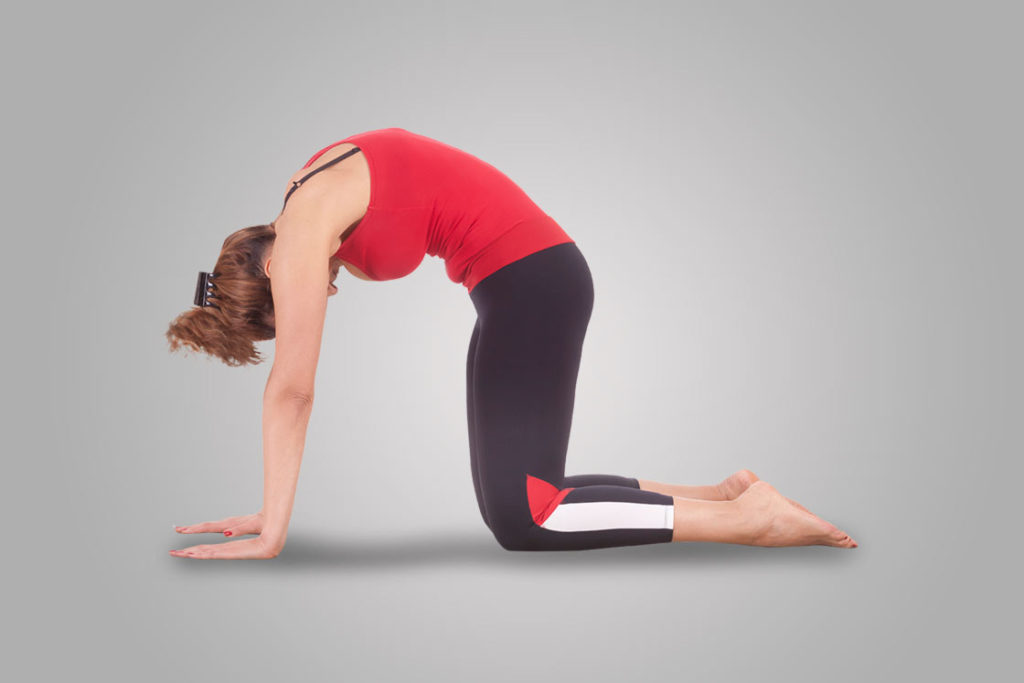
This pose is helpful in relaxing and stretching most of the muscles of the body performed imitating the feline stretch, hence the name.
Cat-stretch is often coupled with cow pose and switching between these poses synchronizing the breaths quiets and calms the disturbed mind. Thus it brings relaxation to the brain and helps in sleeping.
How to practice
- Get down on your all fours to attain a table-top position.
- Exhale, push the belly to the floor while expanding the chest and shoulders.
- Arch your back to look up to assume a cow pose.
- While inhaling, round your back to bring the chin to the chest, this is the cat pose.
Other benefits of Cat Stretch
- It is a great spinal stretch that makes the spine supple and strong.
- Cat pose also stretches the hips, abdomen, and neck muscles.
- It massages the abdominal organs including kidneys and adrenal glands,
8. Seated forward bend (Paschimottanasana)
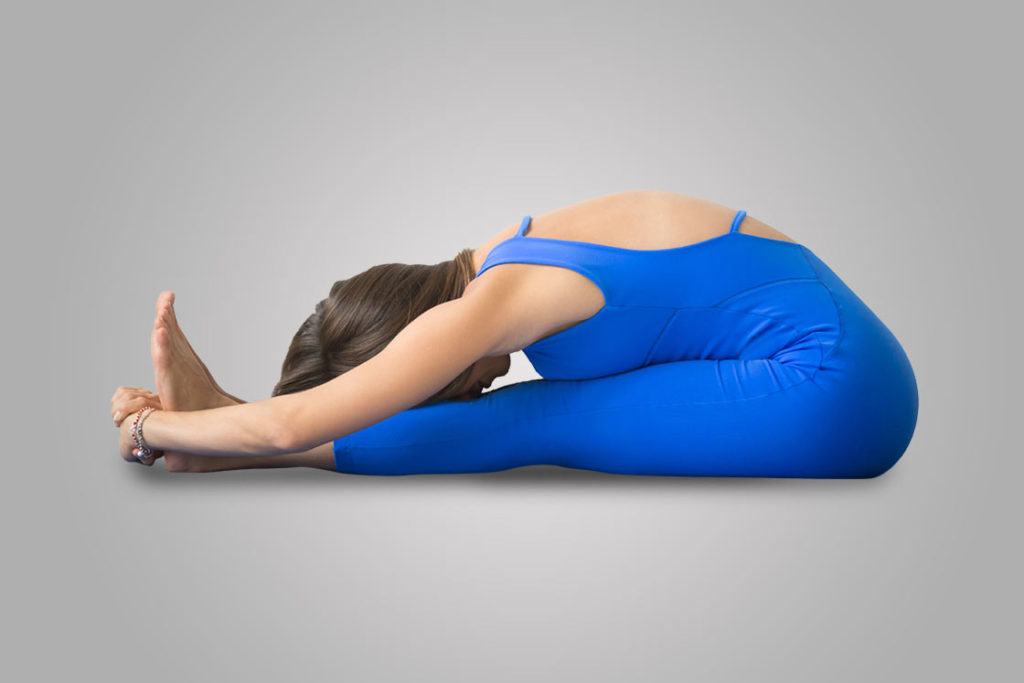
Seated forward bend pose improves sleep by leaving deep calming effects on the nervous system. The breathing involved while stretching back in this pose helps reaching the calming states.
It controls the negative thought patterns and relaxes the brain that is of utmost importance to experience sound sleep. Hence, including a Seated forward bend into your bedtime yoga is a must.
How to practice
- Start with sitting on the floor extending the legs in front and keeping the back straight.
- Place both the palms on the respective knees.
- Bend forward lowering the head and trunk slowly trying to catch the big toes wrapping the thumb, index, and middle fingers.
- Bend forward until the forehead touches the knees.
Other benefits of Seated forward bend
- Seated forward bend stretches the spine and improves its flexibility.
- It is beneficial in reducing belly fat.
- It is therapeutic in curing constipation or other digestive disorders.
- Regularly practicing this pose is effective in curing impotency.
9. Happy Baby Pose (Ananda Balasana)
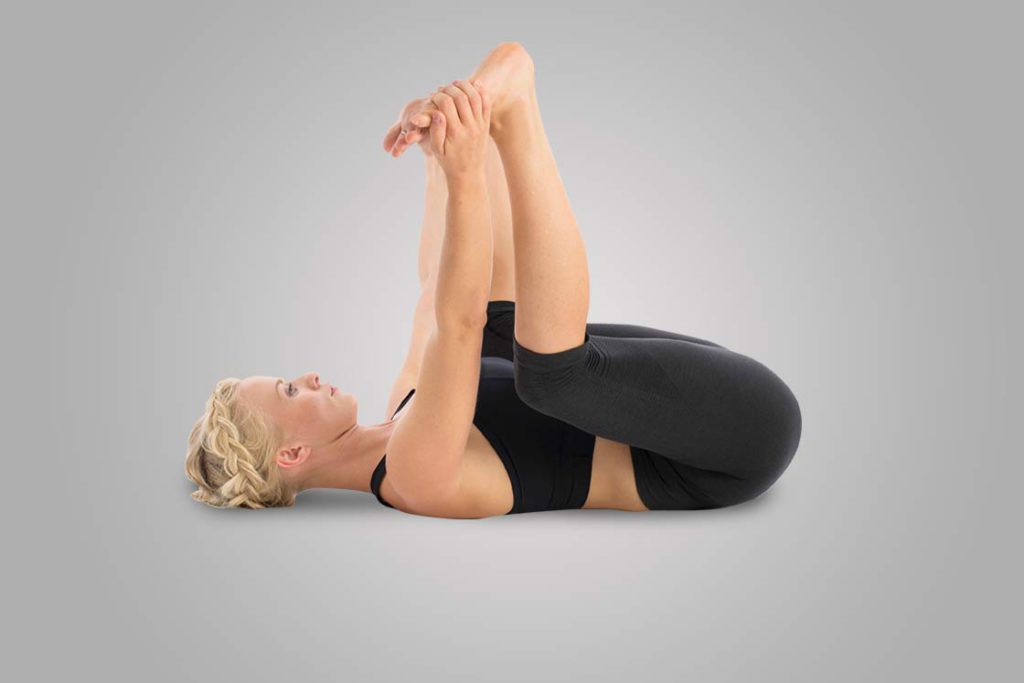
Happy baby pose, popularly known as Ananda Balasana, is a gentle back massaging pose that relieves tightness in the lower back, where most of the muscular tensions accumulate.
Hence, practicing this pose releases all the muscular tension, promotes a sense of relaxation, thus, helpful in inducing better sleep.
How to practice
- Lie on back, bending your knees bringing them closer to the chest, and keep the bottoms of the feet towards the ceiling.
- Extend your arms toward the feet to hold the big toes or outer sides of the feet.
- Let the head and shoulder blades rest on the floor.
- Holding the toes you can roll the back side-to side.
Other benefits of Happy Baby Pose
- This gentle back rubbing pose relieves tiredness and fatigue.
- Realigns and strengthens the back.
- Stretches the hamstrings and improves legs flexibility.
- Helps release stress and brings forth the inner joy.
10. Supine Spinal Twist (Jathara Parivartanasana)
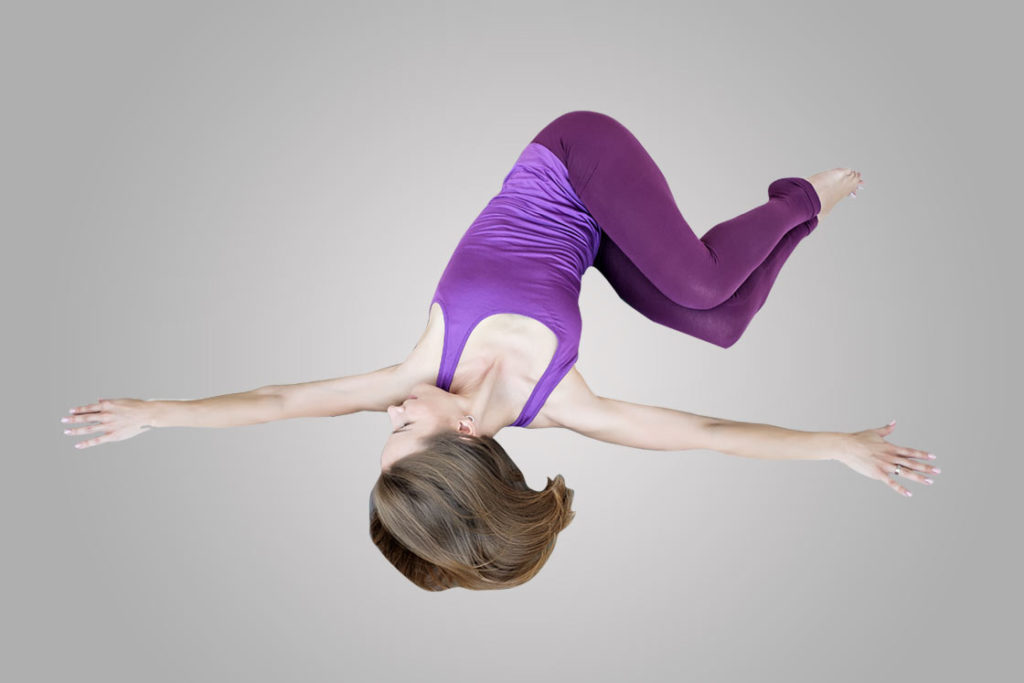
If lower back pain is the root cause of your sleep deprivation then practicing Supine Spinal Twist will come in handy. It helps in inducing sleep because of its great stretch on the quadratus lumborum muscle [efn_note] Quadratus lumborum muscle https://en.wikipedia.org/wiki/Quadratus_lumborum_muscle [/efn_note].
This is the deepest abdominal muscle that extends from the pelvis to the lower rib. It is the only muscle responsible for pain in stiff back muscle that often leads to sleep deprivation.
How to practice
- Lie on your back stretching the arms to the sides at shoulder level.
- Bend your left knee to place the left foot beside the outer right knee.
- With the help of your right hand lower the left knee to the floor.
- Keep both the shoulders to the floor and focus on the spinal twist.
- Hold it for a minute and then straighten the knee. Repeat it switching the leg on another side.
Other benefits of Abdominal Twist Pose
- This twisting posture is great to trim the waist line.
- Also, helpful in removing toxins off the body.
- It gently stretches the shoulders, chest, hips, upper, and lower back.
Additional yoga practices for improving sleep quality
- Besides yoga poses, breath also plays an equally significant role. The deep breath synchronized with the poses helps in bringing relaxation while practicing them.
- If doing poses that are above listed is tough to practice, then you can try simple yoga mudras for better sleep.
- Ujjayi breath aka victorious or ocean breath is widely practiced for enhancing the calming effects of the poses involved in this bedtime yoga.
- Except for the corpse pose, ocean breath can be practiced in all the above-described poses.
- Yoga for sleep right before bedtime for about three to five minutes is sufficient to fulfill its purpose.
Conclusion
Get rid of all your sleeping concerns by practicing these yoga poses before bedtime and improve your productivity by the day.
Being patient and consistent following yoga for sleep are the keys to sleep peacefully and qualitatively. Thus, wait no more, for buying a yoga mat to start practicing as now you know that doing it in the bed would be sufficient for a night of better sleep.

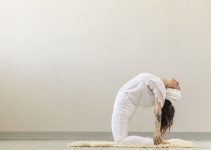

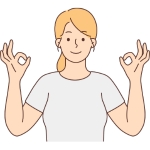
 Oct 24th to 30th
Oct 24th to 30th Learn Mudras
Learn Mudras  Deepen Your Practice
Deepen Your Practice  Find Inner Peace
Find Inner Peace